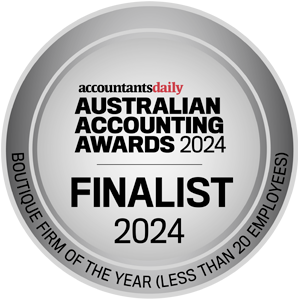
The Australian Government delivered the Federal Budget on 25 October 2022, the second federal budget for the year. In his budget speech the new government’s Treasurer, the Hon Dr Jim Chalmers MP, highlighted that the budget “does three things:
- It provides cost of living relief which is responsible, not reckless – to make life easier for Australians, without adding to inflation.
- It targets investments in a stronger, more resilient, more modern economy.
- And it begins the hard yards of Budget repair.”
Some budget changes that could impact SMEs or NFPs include the following.
For employers of skilled migrants
Skilled migration to address workforce shortages was a focus area of the budget. The government announced an increase in the permanent migration program intake to 195,000 places in 2022–2023. More than 90 per cent of places will be for skilled migrants and more than 25 per cent of places will be targeted towards regional areas.
Work restrictions on holders of student and secondary training visas will be relaxed until 2023, allowing them to work additional hours in any sector. An extra 500 places will be added to the aged care training pathway for the Pacific Australia Labour Mobility scheme.
For new parents
Australia’s Paid Parental Leave (PPL) Scheme will be extended by two additional weeks per year until the scheme reaches a full 26 weeks by 1 July 2026. The leave entitlement can be shared by two parents (a proportion will be on a “use it or lose it” basis).
Reforms will allow either parent to claim the payment, and both birth parents and non-birth parents to receive it if they meet the eligibility criteria.
Eligibility for Childcare Subsidies (CCS) will be extended to families earning more than $356,756 (but less than $530,000) in household income.
For employers and fleet managers
Taxes on electric vehicles and import tariffs will be reduced from 1 July 2022. For employers, the exempt electric car fringe benefits must be included in an employee’s reportable fringe benefits amount.
Exemptions from FBT import tariffs can apply to battery, hydrogen fuel cell, and plug-in hybrid electric cars. However, the car must first have a retail price below the luxury car tax threshold ($84,916 for fuel efficient vehicles for the 2022–2023 income year and not have been held or used before 1 July 2022.
For NFPs
For NFPs some areas of focus for increased funding include:
- NDIS initiatives such as: fraud detection; an alternative dispute resolution pilot; NDIA staffing; and the NDIS review.
- Funding for fighting domestic violence has been allocated at 1.7 billion over six years.
- First Nations initiatives to receive funding include The Voice referendum, child health and education, and health clinics
- Funding was allocated to expand Headspace and support the mental health of communities in flood-affected NSW.
- Climate initiatives will receive significant funding of $25 billion in the years to 2030.
Key taxation items outside this budget
Other key items related to personal income/business income taxation that are not mentioned in this budget are already scheduled to take place:
- Introduction of Stage 3 tax cuts – from 1 July 2024
(Incomes between $45,000 and $200,000 would be taxed at a flat rate of 30%) - Expiration of temporary full expensing rules – finishing 30
June 2023 - Expiration of loss carry-back rules – finishing 30 June 2023
- Expiration of low-and-middle-income tax offset (LMITO) – finished on 30 June 2022.
In his speech the Treasurer noted that the budget “recognises that our best defence against uncertainty around the world is responsible economic management here at home.”
If you need to discuss economic management of your business or NFP, an accounting service can provide valuable advice. Contact Next Dimension Accounting.






